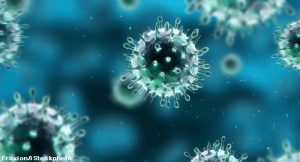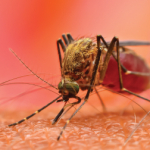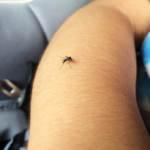 Along with the rise in temperatures across the globe, doctors have also seen an increase in the number of chikungunya cases, a viral disease spread through mosquito bites that can lead to severe joint pain. Little research has been conducted on how long the virus continues to cause arthritis-like symptoms after the initial infection.
Along with the rise in temperatures across the globe, doctors have also seen an increase in the number of chikungunya cases, a viral disease spread through mosquito bites that can lead to severe joint pain. Little research has been conducted on how long the virus continues to cause arthritis-like symptoms after the initial infection.
A study, published in the August 2020 issue of The Journal of Rheumatology, found one out of eight patients continue to experience classic joint pain up to three years after being infected with the chikungunya virus (CHIKV).1
“Our study marks the longest time a cohort of patients, infected with the CHIKV virus, has been followed,” says Aileen Y. Chang, MD, MSPH, assistant professor of medicine at the George Washington University, Washington, D.C. “Several studies have followed patients for a shorter duration and found symptoms, such as fever and joint pain, lasted for several weeks or months. Our study found, in some patients, the virus may cause severe joint pain that lasts for years.”
As part of their study, Dr. Chang and her colleagues conducted a cross-sectional, follow-up of 120 patients from an initial cohort of 500 patients who reported joint pain two years after infection with CHIKV in Colombia. Patients were diagnosed with CHIKV during the 2014–15 epidemic, and baseline and follow-up symptoms at 40 months were evaluated in serologically confirmed cases.
Dr. Chang says infected patients in the Latin American cohort reported fever and joint pain in their knees, hands, toes and elbows. A quarter of the patients reported no signs of joint pain prior to being infected by the virus.
According to the Centers for Disease Control & Prevention (CDC), outbreaks of the virus have occurred in Africa, Asia, East Europe and near the Indian and Pacific oceans. The CDC notes that chikungunya was found in late 2013 for the first time in the Americas, on islands in the Caribbean.2 Since 2017, there have been more than a million cases reported in the Americas.
“Although there have long been cases of [chikungunya] found in Americans who travel outside the U.S. to locations where the virus has been reported, we’ve also seen an increase in the number of [chikungunya] cases in Florida and the U.S. Virgin Islands,” Dr. Chang says.
In a previous cohort study, Dr. Chang and her colleagues found 485 of 500 patients had serologically confirmed chikungunya and reported joint pain. The most commonly affected joints were the small joints, including the wrists, ankles and fingers.3
“After 20 months, a quarter of the participants had persistent joint pain,” Dr. Chang says. “The high frequency of the disease highlights the need for prevention and treatment methods.”
Possible Vaccinations & Treatments
Currently, no vaccine is available to prevent chikungunya, and those traveling to countries where CHIKV has been found are encouraged to use mosquito repellant.
Valneva, a French biotech company, and Maryland-based Emergent BioSolutions have both developed CHIKV vaccines that are showing potential in clinical studies. Emergent announced it was moving forward with phase 3 of its study in early 2020.4
Although physicians in Brazil and other countries, commonly treat patients with chikungunya, it’s not as common in the U.S.
“Physicians aren’t used to diagnosing chikungunya here in the U.S., and there’s no standard, evidence-based treatment,” Dr. Chang says. “As a result, [chikungunya] is treated symptomatically, with doctors recommending rest, fluids and medicines to relieve fever and aching, such as ibuprofen.”
For patients who progress from the acute to the chronic stage of the disease and experience joint pain, Dr. Chang says methotrexate, also used for patients with rheumatoid arthritis (RA), has been shown to be an effective treatment. Findings from her study showed the most common type of pain reported was soreness with periods of relief and subsequent recurrence. More than 75% of patients in the cohort reported stiffness after immobility, while 39% experienced morning stiffness.
“Although the number of available studies on methotrexate usage in patients with [chikungunya] is limited, the findings do indicate sufficient efficacy to justify using the medication,” Dr. Chang says. “We’re hoping to design a clinical trial that would examine the effectiveness of methotrexate on a larger cohort of patients.”
In countries where access to healthcare posed an obstacle, Dr. Chang says some patients have been prescribed acetaminophen when methotrexate wasn’t available.
A blood test is the only way for physicians to confirm chikungunya, which can initially be confused with other, more familiar diseases, such as dengue, influenza or yellow fever.
“Serological tests, such as ELISA [enzyme-linked immunosorbent assays], may confirm the presence of IgG anti-CHIKV antibodies,” Dr. Chang says. “IgM antibodies are usually highest in the first three to five weeks after the onset of illness.”
With cities across the country experiencing warmer and more humid temperatures, Dr. Chang believes there will continue to be an increase in the number of patients with chikungunya.
“With warmer climates, we’ve seen the distribution of the Aedes mosquito, responsible for transmitting CHIKV move north,” Dr. Chang says. “We have the mosquito that spreads CHIKV in Washington, D.C., and CHIKV should definitely be on physicians’ radar if a patient has fever, fatigue and joint pain, especially if they have recently traveled abroad.”
For now, Dr. Chang says prevention is key.
“DEET works better than other insect repellants for mosquitoes and can prevent transmission of the CHIKV and Zika viruses,” Dr. Chang says. “Patients traveling to a hot, humid area where infection cases have been reported should be encouraged to use DEET over their sunscreen as a precaution.”
Linda Childers is a health writer located in the San Francisco Bay Area.
References
- Chang AY, Tritsch SR, Encinales L, et al. Chronic joint pain three years after chikungunya virus infection largely characterized by relapsing-remitting symptoms. J Rheumatol. 2020 Aug 1;47(8):1267–1274. Epub 2019 Jul 1.
- Centers for Disease Control & Prevention. Chikungunya virus. 2019 Sep 19.
- Chang AY, Encinales L, Pacheco N, et al. Frequency of chronic joint pain following a chikungunya virus infection: A Colombia cohort study. Arthritis Rheumatol. 2018 Apr;70(4):578–584. Epub 2018 Mar 2.
- Hackett DW. Chikungunya vaccine candidate to begin testing in Europe. Precision Vaccination. 2020 Jan 14.

